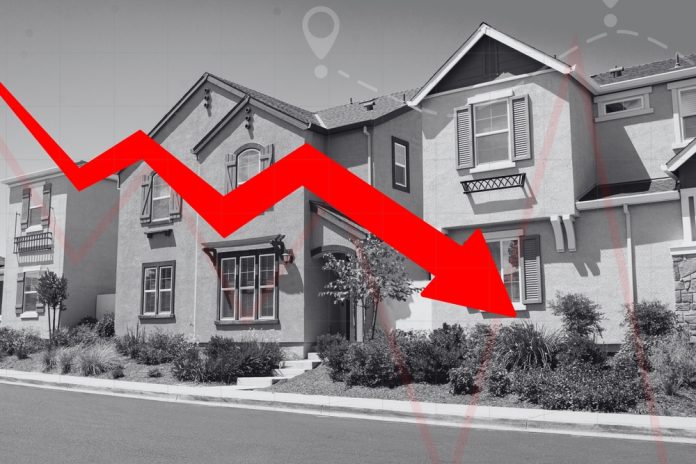Mortgage rates have been on a rollercoaster ride over the past year, but recent weeks have brought welcome relief for buyers and homeowners looking to refinance. With mortgage applications rising sharply and rates falling to levels not seen since September 2024, the dynamics of the housing market are shifting in real time. For those who have been hesitant to make a move, these changes provide both opportunity and urgency.
Whether you are considering buying your first home, upgrading to a larger property, or refinancing your existing mortgage, understanding how the recent mortgage rate drop affects your options is critical. In this article, we break down the latest trends, offer insights on what they mean for different types of buyers and sellers, and provide actionable tips to navigate today’s evolving market with confidence.
Understanding the Recent Mortgage Rate Drop
The recent mortgage rate drop is a result of several economic factors, including the anticipation of Federal Reserve rate cuts and market reactions to inflation data. According to the Mortgage Bankers Association (MBA), the average 30-year fixed-rate mortgage for loans under $806,500 decreased to 6.30% from 6.37%. This marks the fourth consecutive week of declining rates and represents the lowest level seen since September 2024. The overall average for all mortgages dipped to 6.13%, according to CBS News.
This trend is particularly significant for potential homebuyers and homeowners looking to refinance. When rates drop, even by fractions of a percent, the cumulative savings over a 30-year mortgage can be substantial. For example, someone refinancing a $400,000 mortgage at the current rate could save thousands in interest payments compared to the rates seen earlier this year.
The mortgage rate drop has also influenced borrower behavior. Fixed-rate mortgages are becoming increasingly attractive compared to adjustable-rate mortgages (ARMs), which have seen a decline in applications below 10%. Buyers seeking stability are opting for fixed payments, and lenders are seeing heightened activity in conventional refinance loans.
Of course, now that the Fed’s rate drop is official, mortgage rates have begun to fluctuate. For example, according to the Wall Street Journal, the average rate on a 30-year fixed-rate mortgage rose slightly from 6.13% to 6.19% in the wake of the Fed’s announcement.
Impact of the Mortgage Rate Drop on Buyers
For buyers, the mortgage rate drop opens up opportunities to purchase homes with more predictable and affordable monthly payments. Purchase applications increased 5% compared with the previous week and are 20% higher than the same week last year. This indicates a growing pool of active buyers ready to take advantage of favorable financing conditions.
Lower rates also allow buyers to expand their purchasing power. A 6.30% mortgage rate on a conventional loan means that buyers can qualify for slightly higher-priced homes without dramatically increasing their monthly payments. This is particularly helpful in competitive markets where bidding wars and limited inventory have historically constrained options.
Additionally, locking in a mortgage now reduces exposure to future rate increases. History shows that mortgage rates can rebound quickly after a decline. For example, rates dropped to a two-year low in September 2024, only to climb back above 7% by early 2025. Securing a rate during this period of decline can provide buyers with financial stability and a clearer path to budgeting and house hunting.
Refinancing Opportunities Amid the Mortgage Rate Drop

Homeowners looking to refinance are experiencing some of the most favorable conditions in over a year. The MBA reports that refinance applications jumped 9% in a single week and are more than double the volume seen in the same week last year. Many borrowers with larger loans, averaging $393,900, are finding significant savings by refinancing at the lower mortgage rates.
Refinancing can be particularly valuable for those with adjustable-rate mortgages or older fixed-rate loans with higher interest. By moving to a lower fixed rate, homeowners can lock in predictable payments and reduce interest costs. Some lenders also offer float-down options, allowing borrowers to take advantage of even lower rates that may emerge before their loan closes.
Even if rates drop further in the future, refinancing now provides flexibility. Borrowers can benefit from immediate savings while retaining the option to refinance again if rates fall materially. This dual benefit makes the current mortgage rate drop an attractive window for many homeowners.
What Sellers Should Know About the Mortgage Rate Drop
Sellers are also affected by the recent mortgage rate drop, as it directly influences buyer demand. Increased buyer activity, fueled by lower rates, creates a more competitive market for homes. Listings that are priced appropriately and move-in ready are likely to attract greater interest, potentially reducing the time a home spends on the market.
However, sellers should remain aware of the nuanced dynamics at play. While overall activity is increasing, certain segments, like USDA loans, are seeing declines due to external factors such as the current government shutdown. Sellers in rural areas or those relying on specific loan programs may need to adjust expectations or marketing strategies accordingly.
Understanding these shifts allows sellers to position their properties strategically. Highlighting financing flexibility, staging homes effectively, and being mindful of pricing can help capitalize on the influx of buyers entering the market due to the mortgage rate drop.
Strategies for Navigating a Market with a Mortgage Rate Drop

Whether buying, selling, or refinancing, a clear strategy is essential. Buyers should consider locking in rates to reduce uncertainty and budget more effectively. Exploring float-down options can add flexibility without sacrificing security. Sellers should focus on pricing accurately and preparing homes to appeal to the growing buyer pool.
Working closely with a real estate agent is critical in a dynamic environment. Agents can provide insights on local trends, help interpret mortgage rate changes, and guide decisions about timing and financing. The goal is to use the mortgage rate drop as an advantage rather than a source of stress.
Additionally, monitoring the market weekly can make a difference. Mortgage rates and applications fluctuate rapidly, and staying informed ensures you can make timely, confident choices whether you are buying, selling, or refinancing.
Expert Insights: Timing and Decision-Making
Recent data and market behavior suggest that waiting indefinitely for the perfect rate may not always pay off. While further drops are possible, history indicates that rates often rebound after declines. Acting during a mortgage rate drop can provide peace of mind and financial clarity.
For buyers, the key takeaway is to weigh current rates against personal financial goals. Refinancers should calculate potential savings and consider long-term benefits of lower fixed rates. Sellers should leverage increased buyer activity to optimize listing outcomes.
Ultimately, making informed decisions based on current data, professional guidance, and careful financial planning ensures that the mortgage rate drop works to your advantage.
Staying Informed and Making Your Next Move

The current mortgage rate drop presents opportunities across the housing market, but timing and strategy remain essential. Buyers, sellers, and homeowners looking to refinance should carefully evaluate how these changes impact their specific circumstances. By staying informed, seeking expert advice, and considering available options like float-downs or refinancing, individuals can navigate this evolving market successfully.
FAQ
What does the recent mortgage rate drop mean for homebuyers?
It means lower monthly payments, increased purchasing power, and an opportunity to lock in rates before potential increases. Buyers can budget more effectively and may qualify for slightly higher-priced homes without exceeding their payment limits.
Should I refinance my mortgage due to the rate drop?
If your current mortgage has a higher interest rate, refinancing can provide significant savings. Consider your loan size, remaining term, and any float-down options offered by lenders to maximize benefits.
How long will the mortgage rate drop last?
Mortgage rates fluctuate daily and are influenced by economic factors, Fed decisions, and market trends. While rates are currently low, they can rise quickly, so acting promptly may be advantageous.
Can sellers benefit from the mortgage rate drop?
Yes, lower rates can increase buyer activity, creating more competition and potentially faster sales. Sellers should price homes strategically and highlight features that appeal to buyers motivated by favorable financing.
Is it better to wait for rates to drop further?
Waiting carries risk. Rates may drop further, but history shows they can rebound quickly. Locking in a favorable rate now provides security and clarity for budgeting and home purchases.

